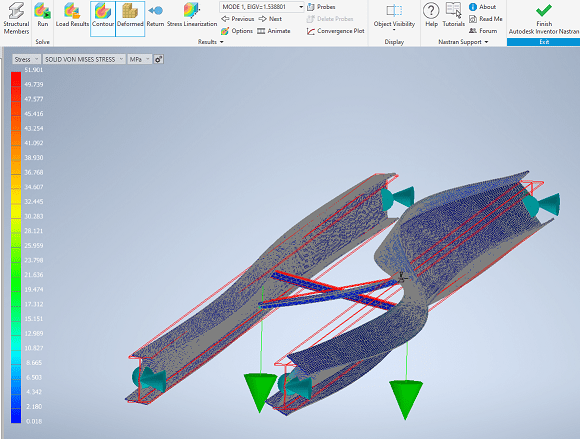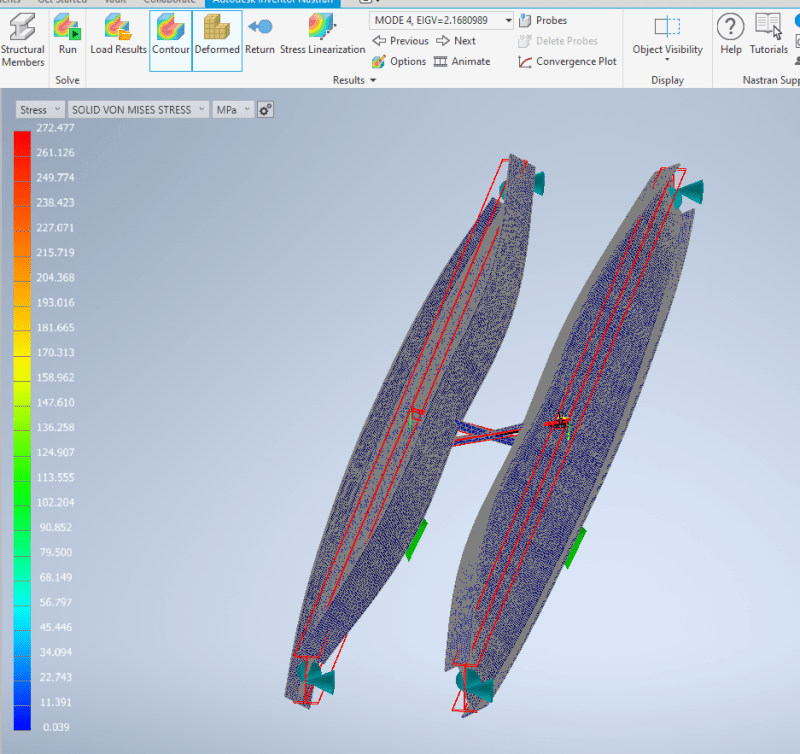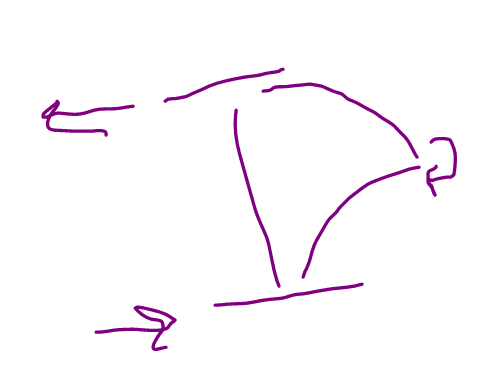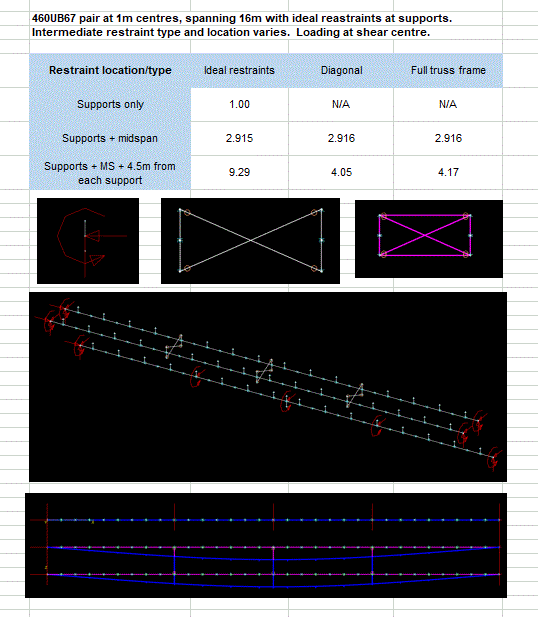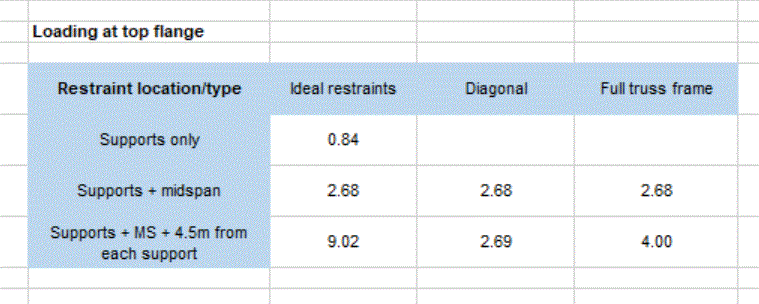Hello,
If i have two Beams with Tension-Compression bracing, what preventing them to buckling laterally to oposite sides. I see that the point of contact of the two bracing bars move for this failure mode, so a bolt connecting the two bars would be the only thing preventing this type of failure? If it is, how to determine if this bolt is adequate?
Thank you.
If i have two Beams with Tension-Compression bracing, what preventing them to buckling laterally to oposite sides. I see that the point of contact of the two bracing bars move for this failure mode, so a bolt connecting the two bars would be the only thing preventing this type of failure? If it is, how to determine if this bolt is adequate?
Thank you.


